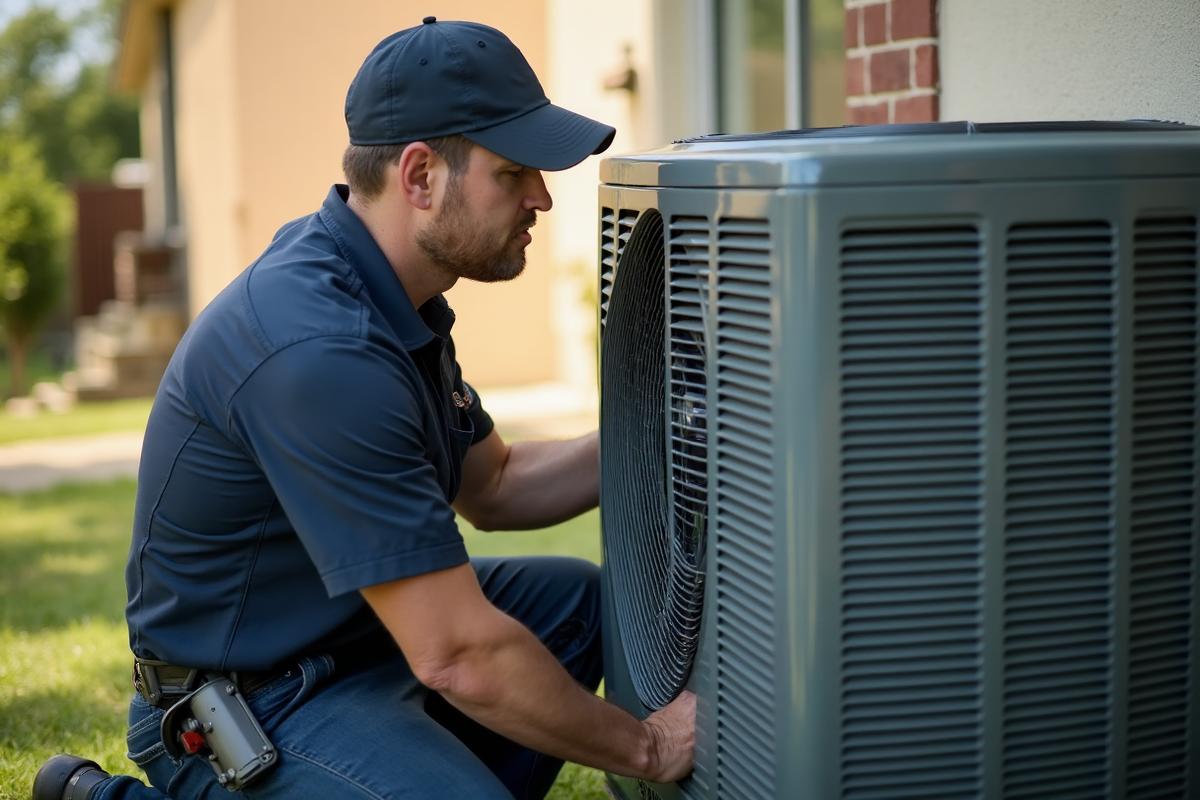Austin homeowners face some of the most demanding HVAC operating conditions in the country, with systems running nearly continuously from May through October and facing dramatic temperature swings throughout the year. This punishing environment makes regular maintenance not just beneficial, but essential for avoiding expensive emergency repairs and premature system replacement.
The mathematics of HVAC maintenance in Austin are compelling when you understand the real costs of system failures. Emergency service calls during peak summer months typically cost 2-3 times more than routine maintenance visits, and that’s before considering the expense of major component replacements that could have been prevented with proper care.
The Austin Climate Challenge
Austin’s unique climate creates specific maintenance needs that differ from other parts of Texas. Extended periods above 95°F stress compressors and electrical components beyond their design parameters. Frequent thunderstorms create voltage fluctuations that damage sensitive electronic controls. High humidity levels promote corrosion and mold growth that affect both system components and indoor air quality.
Central Texas limestone dust and cedar pollen create filtration challenges that require more frequent attention than homeowners in other climates typically need. Construction activity throughout the metro area adds concrete dust and other particulates that can clog systems and damage components if not addressed through regular maintenance.
Financial Impact of Deferred Maintenance
The cost difference between preventive maintenance and reactive repairs in Austin is dramatic. A typical maintenance program costs $200-400 annually, while emergency compressor replacement during a heat wave can cost $2,000-4,000. System replacement due to neglect typically occurs 5-7 years earlier than properly maintained systems, representing thousands in premature replacement costs.
Energy efficiency degradation from poor maintenance compounds these costs. Dirty coils, low refrigerant levels, and restricted airflow can increase energy consumption by 15-25%, adding hundreds to annual utility bills. In Austin’s extended cooling season, these efficiency losses quickly exceed the cost of proper maintenance.
Austin Energy’s rebate programs often require proof of regular maintenance for participation, meaning deferred maintenance can also cost homeowners access to efficiency incentives and upgrade rebates that help offset equipment costs.
What Effective Maintenance Programs Include
Quality HVAC maintenance programs go beyond basic tune-ups to address the specific challenges of Austin’s operating environment. Comprehensive programs include detailed coil cleaning that removes the buildup of dust and pollen that reduces heat transfer efficiency. Electrical connections receive attention because Austin’s voltage fluctuations and high heat loads stress these connections more than in moderate climates.
Refrigerant level monitoring becomes particularly important in Austin, where systems work harder and longer than in milder climates. Small refrigerant leaks that might go unnoticed in moderate climates can cause significant efficiency losses and compressor damage in demanding Texas conditions.
Ductwork inspection and sealing should be part of comprehensive maintenance programs because Austin’s temperature differentials between conditioned spaces and attics create significant stress on duct connections. Leaky ducts waste enormous amounts of energy and force systems to work harder than necessary.
Seasonal Maintenance Timing
Austin’s climate demands specific maintenance timing that differs from standard HVAC service schedules. Spring maintenance before the cooling season begins is absolutely critical because systems that develop problems during summer heat waves create emergency situations that are both expensive and dangerous.
Fall maintenance prepares systems for Austin’s variable winter weather, when heating demands can spike suddenly during cold fronts. Many Austin homeowners neglect heating system maintenance because winter heating demands seem minimal, but sudden cold snaps stress heating components that haven’t been properly maintained.
DIY vs. Professional Maintenance
While homeowners can handle basic tasks like filter changes and outdoor unit cleaning, Austin’s demanding climate makes professional maintenance particularly valuable. Refrigerant work requires specialized equipment and certification, while electrical components need professional attention to prevent safety hazards.
The diagnostic capabilities of experienced technicians become particularly important in Austin, where systems develop problems specific to high-demand operating conditions. Early detection of developing problems prevents minor issues from becoming major failures during critical periods.
Choosing Quality Maintenance Programs
Not all maintenance programs provide equal value, particularly in Austin’s demanding environment. Quality programs include comprehensive system inspection, not just basic cleaning and adjustment. Look for programs that provide detailed maintenance reports and recommendations for addressing developing problems before they cause failures.
Response time guarantees become important during Austin’s summer months when system failures create urgent comfort and safety issues. Priority scheduling for maintenance program customers ensures service when you need it most.
The Long-Term Value Proposition
Properly maintained HVAC systems in Austin typically last 12-15 years compared to 8-10 years for neglected systems. This 3-5 year difference in system life represents thousands in avoided replacement costs, far exceeding the cumulative cost of maintenance programs.
Maintained systems also retain more value and are more attractive to buyers when it comes time to sell your home. Documentation of regular maintenance provides confidence to buyers that the system will continue functioning reliably.
Beyond Cost Savings
Quality maintenance programs provide benefits beyond financial savings. Reliable systems reduce the stress and inconvenience of emergency failures during peak summer heat. Better indoor air quality from clean systems and filters contributes to health and comfort.
Energy efficiency from well-maintained systems reduces environmental impact while controlling utility costs. In Austin’s carbon-conscious community, these environmental benefits matter to many homeowners.
Making Maintenance Work
The key to successful HVAC maintenance in Austin is finding service providers who understand local climate challenges and adjust their maintenance protocols accordingly. Generic maintenance programs designed for moderate climates often miss the specific attention that Austin systems require.
Regular maintenance isn’t just an expense – it’s an investment in system reliability, energy efficiency, and long-term value that pays dividends throughout Austin’s demanding climate year.

 Share
Share Twitter
Twitter LinkedIn
LinkedIn Facebook
Facebook Copy Link
Copy Link